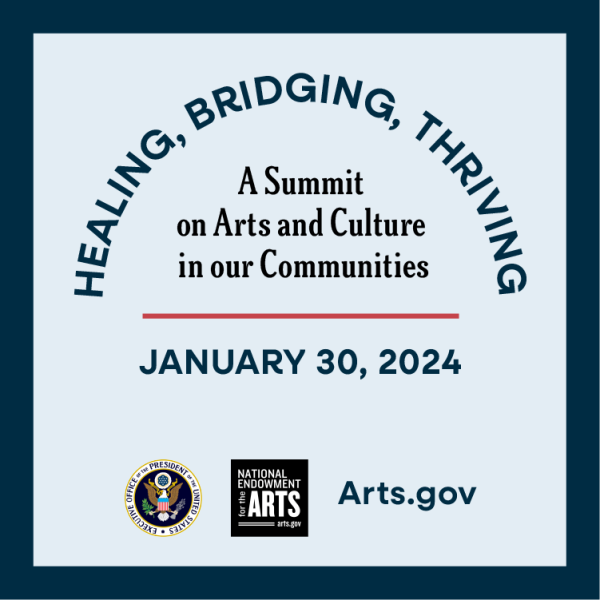February 16, 2024 | AATA President Nadia Paredes, MA, LMFT, ATR
I had the privilege to attend and represent the National Coalition of Creative Arts Therapies Associations (NCCATA) and AATA at both the White House and NEA Summit on Arts and Culture and the Arts and Health Pre-Summit Caucus.
These first-of-its-kind convenings brought together policymakers, arts advocates, and artists to collaborate on how art can contribute to the health and well-being of individuals and communities. Many White House representatives, lawmakers in Congress, as well as the Surgeon General Vivek Murthy attended.

The impetus behind the Summit was a 2022 Executive Order from President Biden elevating the arts as “essential to the well-being, health, vitality, and democracy of our Nation.” I am happy to share that the event discussed the myriad ways art matters for the overall health of human beings. I was also impressed (and a little relieved!) with how aware the participants from the Pre-summit Caucus were in differentiating arts education, art and healing, and arts and mental health.

The Role of Art in Mental Health
Especially since I was representing the creative arts therapies community, I believed it was critical that attendees understand the unique role of art in mental health care. The creative arts therapies, including art therapy, dance/movement therapy, drama therapy, music therapy, and poetry therapy, use arts-based interventions and creative processes for the purpose of mental health care and improving well-being. These fields are grounded in science and backed by peer-reviewed research.
This led to thought-provoking discussions during the pre-Summit sessions, where we dove into the ongoing debate surrounding the integration of science and art. Some advocated for the autonomy of arts, while others emphasized the importance of scientific validation in broadening access to artistic interventions—a dialogue I believe will continue to evolve.
Moreover, the convenings revealed promising opportunities for advancing our profession. Policymakers are increasingly acknowledging the arts as a critical tool in addressing mental health challenges, particularly within public health and community settings. For example, Admiral Rachel Levine from the Department of Health and Human Services (HHS) announced that HHS and NEA are launching a new Interagency Working Group on Arts, Health, and Civic Infrastructure that will “enable communication and coordination across more than ten federal agencies to further partnerships, research, and increased opportunities for the inclusion of arts and cultural strategies for advancing health and strengthening civic infrastructure.”
Discussions also touched on pertinent issues, including licensing, bureaucratic hurdles that decrease accessibility, insurance coverage, and the potential of art prescriptions to combat loneliness (an important topic for the Surgeon General—read his report, Our Epidemic of Loneliness and Isolation). Attendees also explored the cultural disconnect from the art world due to systemic beliefs and the importance of helping dismantle those beliefs at a grander level.
You can watch the Summit, including some very interesting panels and discussions around arts and health, here. I hope that in future convenings there will be a panel specifically for Creative Arts Therapies so we could further introduce our fields to the public as well as government officials and policymakers. I look forward to continuing to work with the conveners to make such a panel possible.
